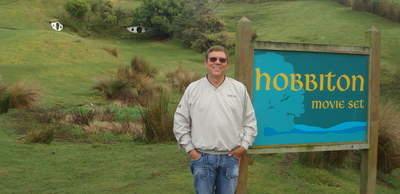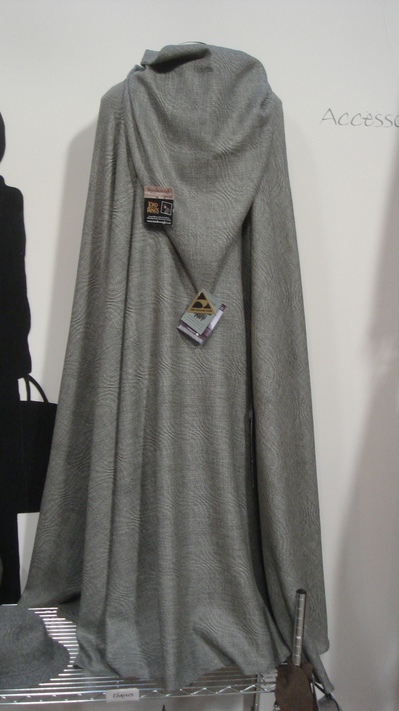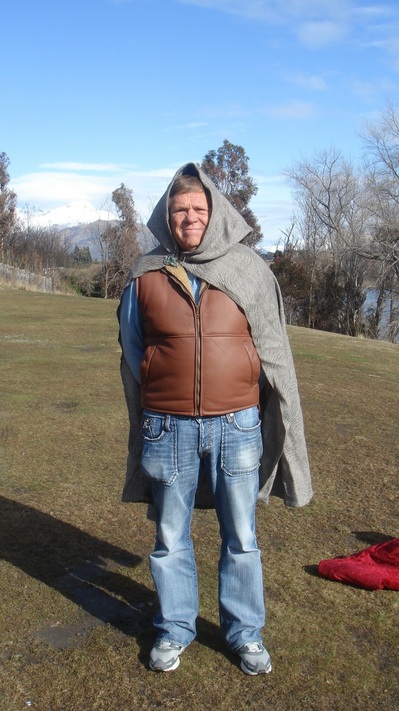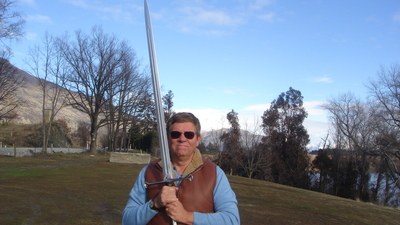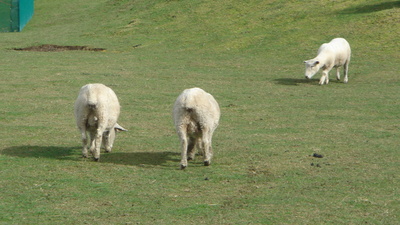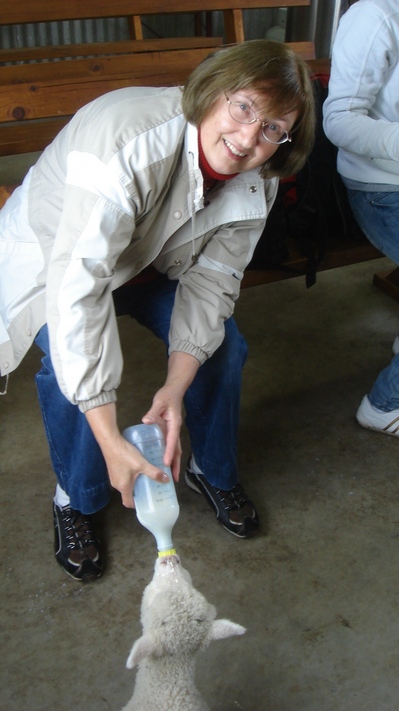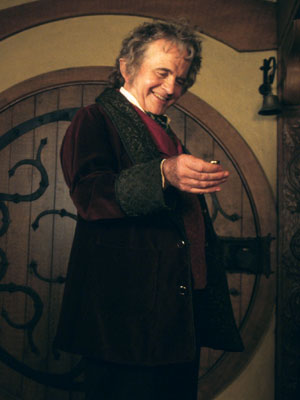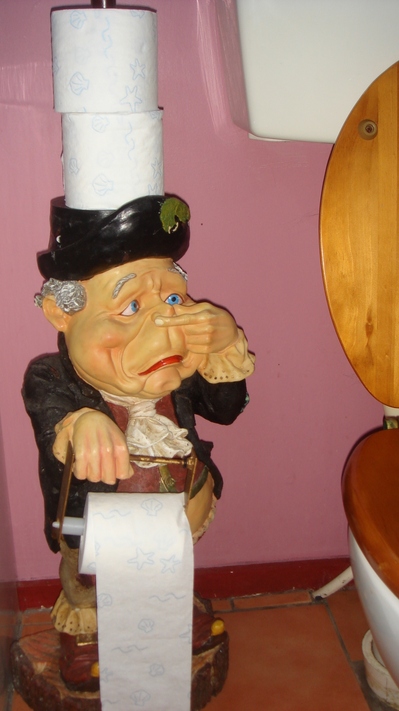Hobbiton is an idyllic place where sheep may safely graze. But even Hobbits need clothes to wear, and in Middle Earth the number one supplier of materials for said outfits are sheep. It has been said that New Zealand is a country of 4 million people and 40 million sheep. I imagine the proportions were about the same in Middle Earth vis a vis the ratio of Hobbits to sheep. Now it is not a woolly tale to say that sheep are still crucial to the economy in NZ, and we are fortunate enough to be able to see how the sheep, without ever so much as a Ba-Ram-U complaint, are making their contribution. Besides all the clothing, one can enjoy lamburgers and lamb shanks. Note below that I am wearing Sam’s woolen clock made on 19th century looms at Stansborough in Wellington. You can have one too — just buy online.
Note my new sheepskin vest in above picture, and Aragorn’s sword in the following one.
Trust me, that sword is heavy. Aragorn must have been one buff hero. But back to the sheep at Hobbiton.
Sheep grow wool faster than my grass grows. And honestly they don’t need it all year round, so sheering the sheep is helpful to them, as well as those weaving Middle Earth shawls. Here are some shots of the sheering of exactly one sheep; notice the enormous pile of wool that results. This particular pile of wool is headed for China to make rugs. Merino sheep are the ones that produce the wool for sweaters, etc.
Always remember that before you fleece the sheep, you need to feed the lambs (ATTENTION PASTORS; SEE JESUS’ INJUNCTION IN JOHN 21.15). Below you will see Ann fulfilling John 21.15.
I’m thinking that Hobbiton could have been named Lambalot. Sadly, we must leave Hobbiton and journey through Middle Earth towards Mordor, but I leave you with one last shot of the Shire. Next up — Second Breakfast!!